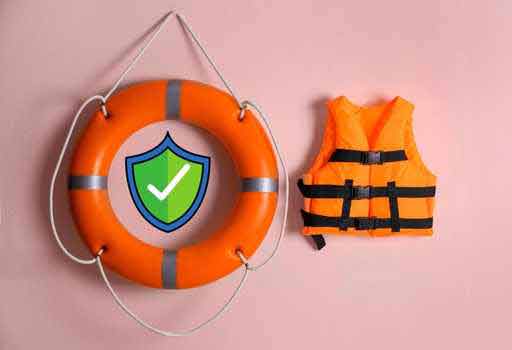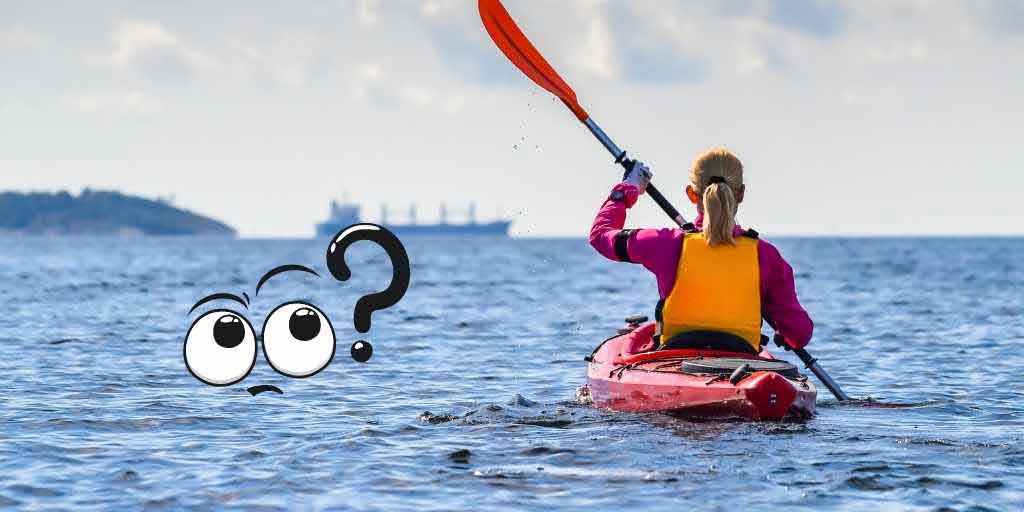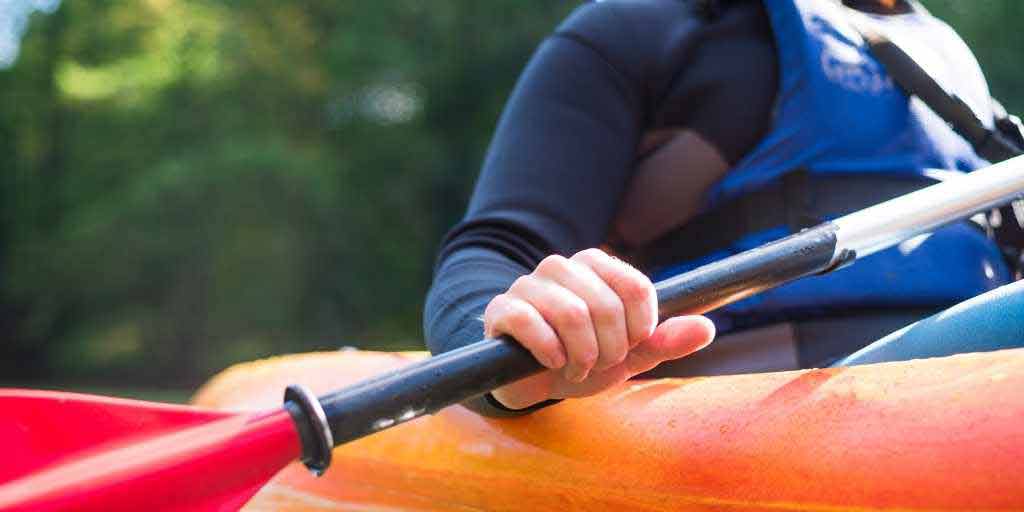While kayaking can be a fun and rewarding experience, it’s crucial to prioritize safety and take proper precautions to minimize risks. One of the most critical safety measures when kayaking is wearing a life jacket. But is it illegal to kayak without a life jacket?
While many assume it’s illegal to kayak without a life jacket, the truth is it’s not illegal to kayak without a life jacket.
In the United States, boating safety is regulated by state laws, not by federal laws. This means that the rules regarding life jackets for kayakers can vary from state to state. While some states require all kayakers to wear a life jacket at all times, others only require them for certain age groups or in specific water conditions.
Therefore, it broadly depends on the specific state laws where you plan to kayak. Regardless of the legal requirements, wearing a life jacket can be a crucial safety measure that can save your life in an emergency.
Let’s explore whether you need a life jacket to kayak and the legal requirements and laws surrounding life jackets. A life jacket can also save your life, even if you get in an accident while kayaking.

Jump To A Section
Why You Would Need A Life Jacket For Kayaking
Being out on the water can be an exhilarating experience. But it can also be dangerous if you don’t take the necessary safety precautions. One of the most important safety precautions you should take when kayaking is to wear a life jacket.
A life jacket can help protect you in the event of an emergency and can be the difference between life and death. Even if you’re an experienced kayaker, you should still wear a life jacket whenever you’re out on the water.
Here’s why you need a life jacket for kayaking:

Buoyancy: A life jacket gives you extra buoyancy, which keeps you afloat in the water. It’s especially helpful if you’re injured!

Protection: A life jacket can help protect your body from impact injuries if you hit a rock or other obstacle in the water.
It can also protect your chest and back from being hit by your paddle or other equipment.

Visibility: You’ll be easier to spot in an emergency if you’re wearing a brightly colored life jacket.

Legal requirements: Most states require kayakers to wear a life jacket, especially in certain water conditions or if they’re under a certain age. In some cases, you can get fined and sued if you don’t wear a life jacket!

Unexpected emergencies: Water conditions can change quickly, the equipment can fail, and the weather can suddenly change.
In a dangerous situation, a life jacket can keep you afloat and increase your chances of survival.
Last but not least, even if you’re a strong swimmer or kayaker, accidents happen. It is, therefore, wise to bring it along with you whenever you kayak.
Legal Requirements for Life Jackets in Kayaking
In order to ensure kayakers’ safety, federal and state laws govern the use of life jackets. Out on the water, kayakers must follow safety guidelines in order to protect themselves.

Federal Laws
The Federal Boat Safety Act of 1971 requires all kayakers, regardless of age, to wear a U.S. Coast Guard-approved life jacket at all times while kayaking. It applies to recreational and commercial vessels in U.S. waters, including kayaks and canoes.
The life jacket must be a U.S. Coast Guard-approved type-3 or type-5 personal flotation device (PFD). The USCG also recommends that kayakers wear a PFD at all times, even when they’re not on the water.
The Coast Guard requires all kayakers to have a USCG-approved life jacket on board. However, many states have their own regulations regarding when and where a life jacket must be worn.
State Laws
In addition to federal laws, some states have additional regulations concerning the use of life jackets while kayaking.
For instance, in California, all kayakers under the age of 18 are required to wear a life jacket at all times. California State Parks and Recreation Department requires kayakers over 16 to wear life jackets when paddling in the ocean, on lakes, or on rivers.
Different states have different laws and regulations. But they generally require that all kayakers have a life jacket appropriate for their weight and activity level.
| State | Age Requirement | Life Jacket Law for Kayakers | Fine Type | Fine Amount |
| California | 13 years and younger | Up to $1,000 and/or 1-year imprisonment | Infraction | Up to $250 |
| Florida | 6 years and younger | Children must wear a properly fitting life jacket while on a moving vessel | Infraction | Up to $86 |
| Georgia | 13 years and younger | All kayakers must have a USCG-approved life jacket on board | Misdemeanor | Up to $1,000 and/or 1 year imprisonment |
| Maine | – | All kayakers must have a USCG-approved life jacket on board | Civil violation (for adults) | $100 |
| Massachusetts | 12 years and younger | All kayakers must have a USCG-approved life jacket on board | Civil infraction (for adults) | Up to $50 |
| New York | 12 years and younger | All kayakers must have a USCG-approved life jacket on board | Violation (for adults) | Up to $100 |
| Texas | 13 years and younger | All kayakers must have a USCG-approved life jacket on board if on open waters, including bays, lakes, and rivers | Class C Misdemeanor | Up to $500 |
Sources of these laws:
- https://dbw.parks.ca.gov/?page_id=28751
- https://flsenate.gov/Session/Bill/2015/241/Analyses/h0241a.HWSS.PDF
- https://www.maine.gov/ifw/docs/maine-boating-laws.pdf
- https://www.mass.gov/service-details/massachusetts-boating-law-summary
- https://tpwd.texas.gov/education/boater-education/lifejacket
The 3 Common Risks of Kayaking without a life jacket
When you’re out on the water, you are at the mercy of the elements and the environment around you. The weather can change suddenly, currents can shift, and waves can become more powerful, putting you at risk of falling or capsizing out of your kayak. Without a life jacket, you are risking not only your life but also the lives of others who may try to rescue you!

That’s why it’s important to understand the risks of kayaking without a life jacket.
The potential dangers of kayaking without a life jacket include the following:
Increased risk of drowning
The biggest risk when kayaking without a life jacket is drowning. Even if you’re an experienced kayaker, you can easily get into a situation where you’re unable to swim to shore. It’s also possible to get tired or lose your balance in the water, which can be dangerous without a personal flotation device. Life jackets provide flotation, enabling you to stay afloat until help arrives.
Cold Shock or Hypothermia
Even on warm days, kayaking without a life jacket can lead to hypothermia in colder waters. It only takes a short time for hypothermia to set in if you’re in an unexpected accident.
Related: Snow Kayaking: Feeling The Winter Wilderness!
Higher risk of head injury
Without a life jacket, kayakers are more vulnerable to head injuries if they hit their head on rocks, branches, or other obstacles in the water. A head injury can lead to unconsciousness or disorientation, making it harder to swim and stay afloat.
Even if you are a strong swimmer, fatigue or injury can make it difficult to stay afloat for extended periods of time. A life jacket can provide the buoyancy you need to stay afloat and conserve your energy until help arrives.
Know how life jackets have saved lives during accidents
A US Coast Guard study says most drownings in boats are caused by drowning, and 86% of them were not wearing life jackets. It’s important to wear a life jacket while kayaking, as it greatly reduces the risk of drowning in an accident.
There have been many real-life examples of how life jackets have saved lives during kayaking accidents. Here are a few notable ones:
In 2019, a kayaker capsized when he paddled on a river in North Carolina. Fortunately, his friends quickly caught up to him and held his head above water until rescuers arrived. It took 15 minutes to rescue the kayaker and treat his hypothermia and exhaustion.
These examples illustrate the significance of wearing a life jacket during kayaking. In each case, the individual involved may not have survived without the buoyancy and protection provided by a life jacket.
By wearing a properly fitted life jacket, kayakers can significantly increase their chances of surviving an accident and returning home safely.
Final Words
Therefore, understanding the legal requirements for life jackets while kayaking is crucial to your safety. In addition to complying with the law, a life jacket mitigates kayaking risks. It is essential to familiarize yourself with the rules in your area regarding life jackets for kayaking activities. Ultimately, paddlers should prioritize their safety by wearing life jackets.


